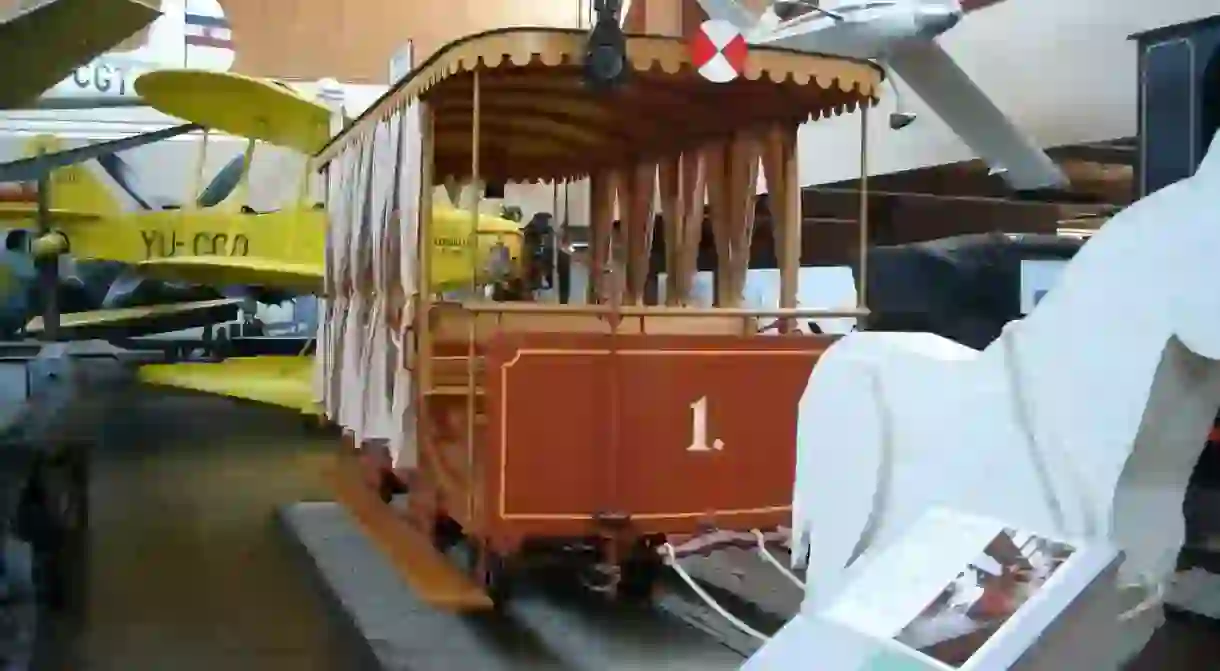The Must-Visit Museums in Zagreb, Croatia

The leading museums in Croatia’s capital tend to be stately institutions founded during the Habsburg era. Attractions such as the Museum of Contemporary Art and the much-lauded Museum of Broken Relationships, draw large crowds of foreign visitors.
Zagreb City Museum
Museum

While the Zagreb City Museum covers urban development from pre-history to the present day, perhaps the most fascinating area of its collection deals with the rapid growth in the 19th century that created much of today’s Croatian capital. Replicas of shopfronts along Ilica, town planning and theatrical displays bring to life Zagreb of the Habsburg days.
Museum of Contemporary Art
Museum, Cinema

The most eagerly anticipated cultural opening of recent times, the Museum of Contemporary Art replaced its predecessor that was housed in a nobleman’s mansion on Katarinin trg. Known by its local acronym of MSU, this is the permanent home for Croatian computer art of the early 1970s and abstract-geometric works from the 1950s. Temporary exhibitions are not confined to Croatia alone – a recent show featured the video artist from Illinois, Dan Graham.
Archaeological Museum
Museum

It would be impossible to take in everything the Archaeological Museum has to offer in one go – its collection stretches to nearly half a million artefacts, most of them unearthed on the territory of Croatia. Many first head to see the stand-out exhibit, the famous Vučedol Dove, a vessel carved around 2,500 B.C. and discovered in 1938. Its intricate markets are said to represent the seasons and constellations, perhaps constituting the first calendar in the western world. Displays of Roman, Ancient Greek, Etruscan and Egyptian finds also warrant investigation.
Nikola Tesla Technical Museum
Museum

Named after the pioneering inventor and Edison protégé Nikola Tesla, the Technical Museum promises little from the outside, but its grey, functional exterior houses a surprisingly entertaining pot-pourri of objects relating to technology and transport. Amid the old trams and steam trains, you’ll find a planetarium, a replica of a coalmine and a beehive display.
Museum of Broken Relationships
Museum, Shop

Zagreb doesn’t only contain fusty institutions belonging to the 19th century, but unusual, challenging attractions too. The Museum of Broken Relationships deals with doomed romantic liaisons by way of bizarre souvenirs, personal letters and strange artefacts, all debris from couples uncoupling. Conceived, in fact, by a former couple, the concept struck such a chord that a permanent home was found in Zagreb’s Upper Town.
Ethnographic Museum
Museum
While a long-established national institution approaching its centenary, the Ethnographic Museum doesn’t limit its remit to the clothing, furniture and musical instruments of Croatia but has a wider reach. Here you’ll find examples from Polynesia, Africa and South America, many collected by museum founder Salamon Berger, a textile trader who moved to Zagreb in the 1870s.
Museum of Arts & Crafts
Museum

Inspired by the English Arts & Crafts movement, this venerable institution was conceived to preserve traditional folk crafts while appealing to the new aesthetics of the bourgeoisie. In a neo-Renaissance palace designed by Hermann Bollé, this huge collection of furniture, ceramics, clocks, paintings and equipment covers more than 500 years of manufacture and creation. Look out for its temporary exhibitions too; a recent example being The Baroque Splendour of Venice.
Mimara Museum
Museum, School

Zagreb’s finest art collection is housed in a former secondary school opened in 1895. It is still not known how controversial war-time cultural consultant Ante Topić Mimara obtained his outstanding collection, but the Goyas, Canalettos, Holbeins, Van Dycks and Turners at today’s Mimara Museum are worth setting aside most of a day for.
Croatian History Museum
Building, Museum

Originally mainly housed in what was the National Museum, this collection gained its national focus during the Homeland War for independence in the early 1990s. Still staging temporary exhibitions at a modest building in the Upper Town, the Croatian History Museum has long been looking for a permanent home for its considerable permanent collection. Recent shows have included Dubrovnik During the Homeland War 1991-95 and Photography of World War II.
Croatian Natural History Museum
Museum
Another offshoot of the National Museum opened in 1846, the Croatian Natural History Museum contains a huge number of specimens mainly collected by the Croatian Academy of Sciences. In terms of local flora alone, there are some 100,000 examples, as well as minerals, rocks and fossils. Plus, you can visit a zoological section of mammals, birds, reptiles and fish. All of it housed in a former nobleman’s palace that belonged to Hungarian Duke Várkony, who established Zagreb’s first public theatre in 1797.













